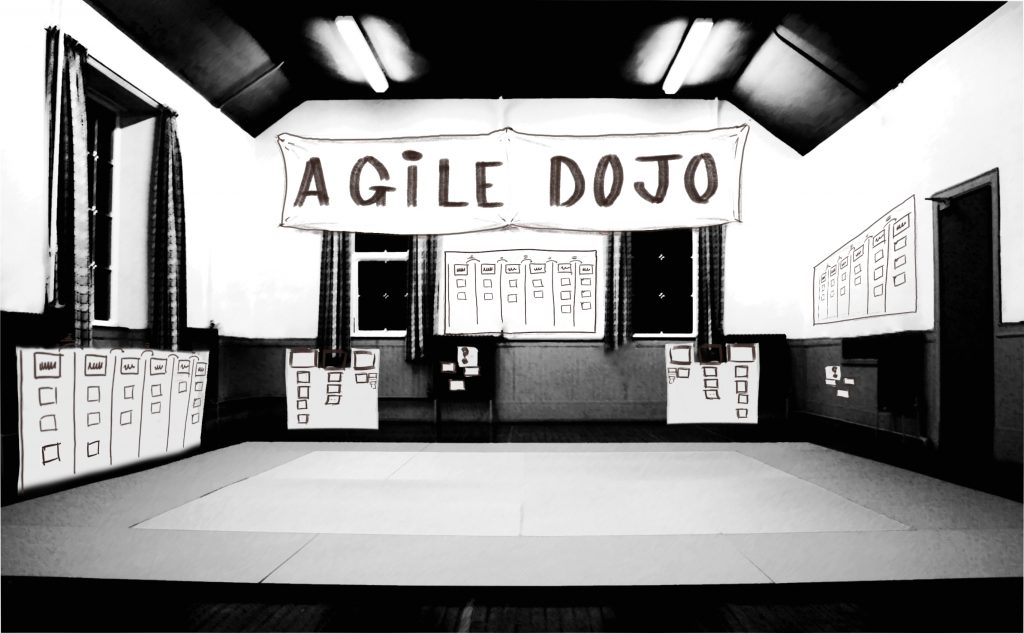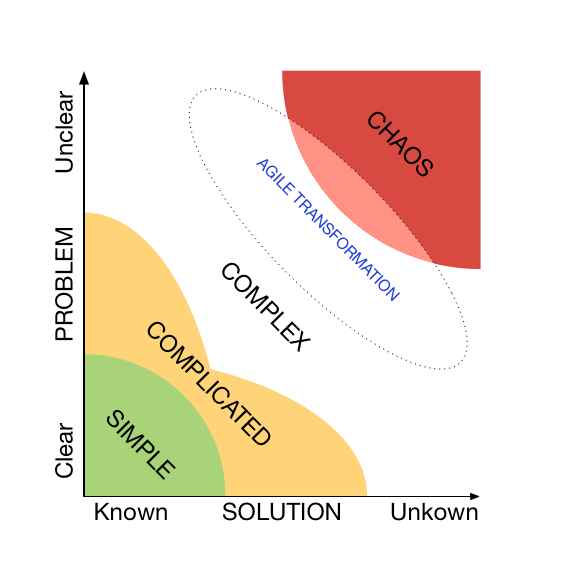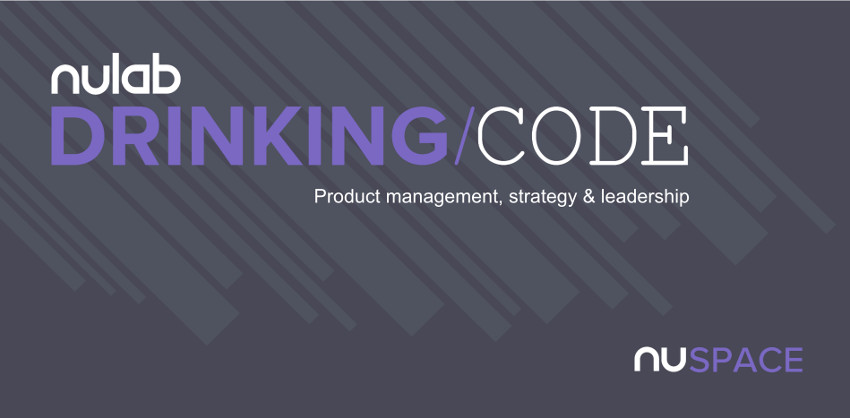Agile Dojo Singapore – practice is learnt by practice
My long due project of Agile Dojos in Singapore have started and I’m so thrilled. It’s the first Tuesday of every month and anyone can register on Meetup.com.
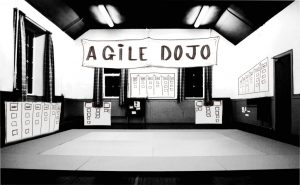
I believe that at some level, practice can only be learnt by practice. In this regard I’ve been longing for a meetup where I could exercise with other Agile practitioners and learn by comparing our approaches. In short: an Agile dojo.If you want to review the various sessions and register on meetup, here it is
To ensure the focus will stay on practice, here’s the charter synthetising the spirit
- it’s a place and time focussed on practice
- we favour transmission of knowledge by practicing together (companionship) instead of being taught
- the dojo belongs to attenders. Act like it’s yours, make it interesting, bring ideas, raise your thoughts, convey people to join
- not confidential: what is said and seen can be shared outside
- diversity of practitioners improves the learning: brings your teammate, your colleague, your client, experts _and_ beginners
Agile Dojo Singapore
Singapore, SG
468 Agile practionersWe believe that Agile practices are better learnt by practice. This meetup is a space where Agile practioners like you come to practice together in order to share their skills…
“How to do your transformation right” / 31 May at Voxxed Days ’19
Coaches in Singapore comment among themselves how the transformations in the region are done wrong, leading to a puzzling absence of any success story. To me, it’s frustration and sadness.
Frustration when I compare to everything I’ve learnt over the years about change management. Sadness when I see what some clients are going through while their transformation is dragging for years without much to show for it. Fatigue is felt.
It was time to tame my frustration, turn it to passion, and speak up.
Since I submitted the topic, my brain has been racking up everything I learnt and everything I witnessed on transformations good and bad. While working on the topic I had several aha moments, felt dots connecting, thoughts starting to simplify. I got way more clarity on what exactly is going wrong in the current trend and how to explain the difference with the approches that prove successful.
I’m fired up. See you there.
3 reasons why Agile Transformation are too complex for a Big Plan approach
Have you heard of the Stacey matrix? Stacey has described the relationship between complexity in solving a problem and the different approaches that are effective.
A detailed plan can only address a situation where response to your actions remain predictable. Beyond this level of simplicity, plans don’t work. Solving your problem means “dancing” with it: entering a dynamic, engaged, and highly adaptive approach. That’s exactly the level of complexity of an Agile transformation.
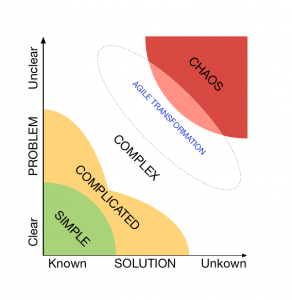
What makes transforming an organisation to Agile so complex? 3 key factor comes to my mind.
Your organisation will evolve all along
After your first step, the organisation has already evolved to something new. Mindsets have changed, new habits have formed, structure and processes have been changed. Heck, even people will change. It’s already a new territory, and many other steps are due.
Your organisation will react to the change
Your organisation is a living being. Every single individual, every team, every division, branch has their own context, processes and personalities, each one will respond differently. Some changes will be easy here, while extremely difficult there. Variants will appear.
This can’t be predicted.
Some fundamentals will be rocked: culture, beliefs, habits
You are going through an approach that challenges how people work together, how your organisation is structured, and how you do business. I can’t enumerate how many aspects of a business is touched, and I’m discovering new ones with my clients as we go. And so will you.
So what do you need instead of a plan? You need a vision and a strategy, and a system.
Also, you can call me 🙂
Traditional TV becoming digital heroes in 3 years
Context – national TV under pressure to be on the forefront of digital media while facing bare
- Weekly crashes on production, low level of software and devops practices, distrust between IT and media branches
- Digital productions under political scrutiny, asked to grow N-fold
- Working directly with the CTO of the digital division
- Coaching for 3 years with a pair coach, Jean-Claude Grosjean
- Approach: Accompanying Digital division as a whole into an organic transformation
1. Change strategy hand in hand with the CTO
- Change management addressed early on (establishing urgency, vision, strategy)
- Weekly strategic follow up
2. Approaching Teams and stakeholders as one
- Addressing media and IT as joint teams
- 1o1 coaching of organisational roles: sponsors, agile managers, product managers
3. Organic and adaptive Agile transition in the organisation
- Going product by product, with consideration of opportunity and strategic consideration
- Starting with one pilot project, then
- Coaching of every new projects to run inception and delivery the Agile way
- Audit of existing projects, on-demand coaching when necessary
- Always waiting for buy-in from IT and media branches, then both included in the coaching
4. Stabilization and resilience of Agile practices
- Using simplified Agility metrics to review progress and eventual plateaux
- Expertise and coaching on-demand with advanced teams to refine and adjust their practices
- Training internal coaches
- Creating Circles of Practitioners for various roles and topic of interest
Outcome – state of the art tech and practices help reach several national top audience
- 300 people coached (IT+business)
- Several websites and apps becoming Top 3 national audience (FranceTVSport, FranceTVInfo, CultureBox)
- Achievement praised by government sponsorship
- Teams now sharing their experience at Tech and Agile conferences
- Fun fact: a channel asked for an Agile coach in the design phase of a new TV show
How to confront ideas with your team / 21-03 at Nulab Drinking Code meetup
I’ll be in Changi Business Park to talk about something I deeply care about: confronting your opinion with others. 2 reasons it’s close to my heart
Nulab Drinking Code March 2019 - Product Management
- it’s a key skill of high performance teams (see books like Radical Candor, Creative Inc, etc) and I love when teams kicks ass
- it makes people’s life better at work and in life eventually
For a broader take on the subject, you can refer to my session at Voxxed Days SG’18 “Developer under Influence” that these lovely fellows have recorded (47 minutes though, and very dense)
How we combined virtual coaching and local coaching to kickstart a multi-continent, round the clock team of teams
Multi-continent teams caught in a spiral of ever-growing support effort
- 4 teams across South East Asia and South America answering IT backend demand from various business lines 24/7
- A no barrier policy for answering demands led to excellent support ratings but increasingly harder to sustain as demand grows
- IT teams needs to step up as a force of innovation as a technological disruption is foreseen to hit the business within 5 years
- Agile practices are to be experimented
- To make space for a product strategy balancing between support and value-adding development
- To increase team development efficiency
- The teammates have never worked in Agile nor been trained
- 12H time zone difference renders every synchronisation a challenge
Our approach – coach the teams as a SAFe Agile Release Train led by a virtual Program team
- Worked with a pair coach based in South America
1. Onboard teams in Agile at each location with intense 2 weeks coaching
- Agile training & Agile Roles coaching
- Team coaching (values, vision, roles)
- Fast paced Agile iterations for accelerated learning
- Alternate trainings as needed through coachings for maximum learning
2. Adapt Program rituals and artefacts to realities of across-the-globe communications: time zones, culture, alignment
- define synchronisation points in a minimalistic manner
- define protocols and artefacts templates to help team align on wordings
- Experiment about effective coaches synchronisation
3. Virtually coach a distributed SAFe Program team across 3 continents
- Online team training and coaching
- Remote meeting facilitation experiments
- Relayed with face to face coaching at each location
- In coordination with US Agile supervision entity
After early struggles on team synchronisation, the teams rose to a force of innovation for the organisation within 3 months
- Teams fully autonomous in Agile, building their own custom practices after 3 month
- Program Team found its footing and took the lead of its own SAFe experiment within 3 weeks
- New profiles have emerged as Product Owner with a fresh sense of leadership
- Team has started challenging and proposing business users to help them better
- Learnings have help reshaped coaching approach for upcoming Agile Program transformation on other business branches
- Product Owners and Program Team have become valued mentors for other programs
